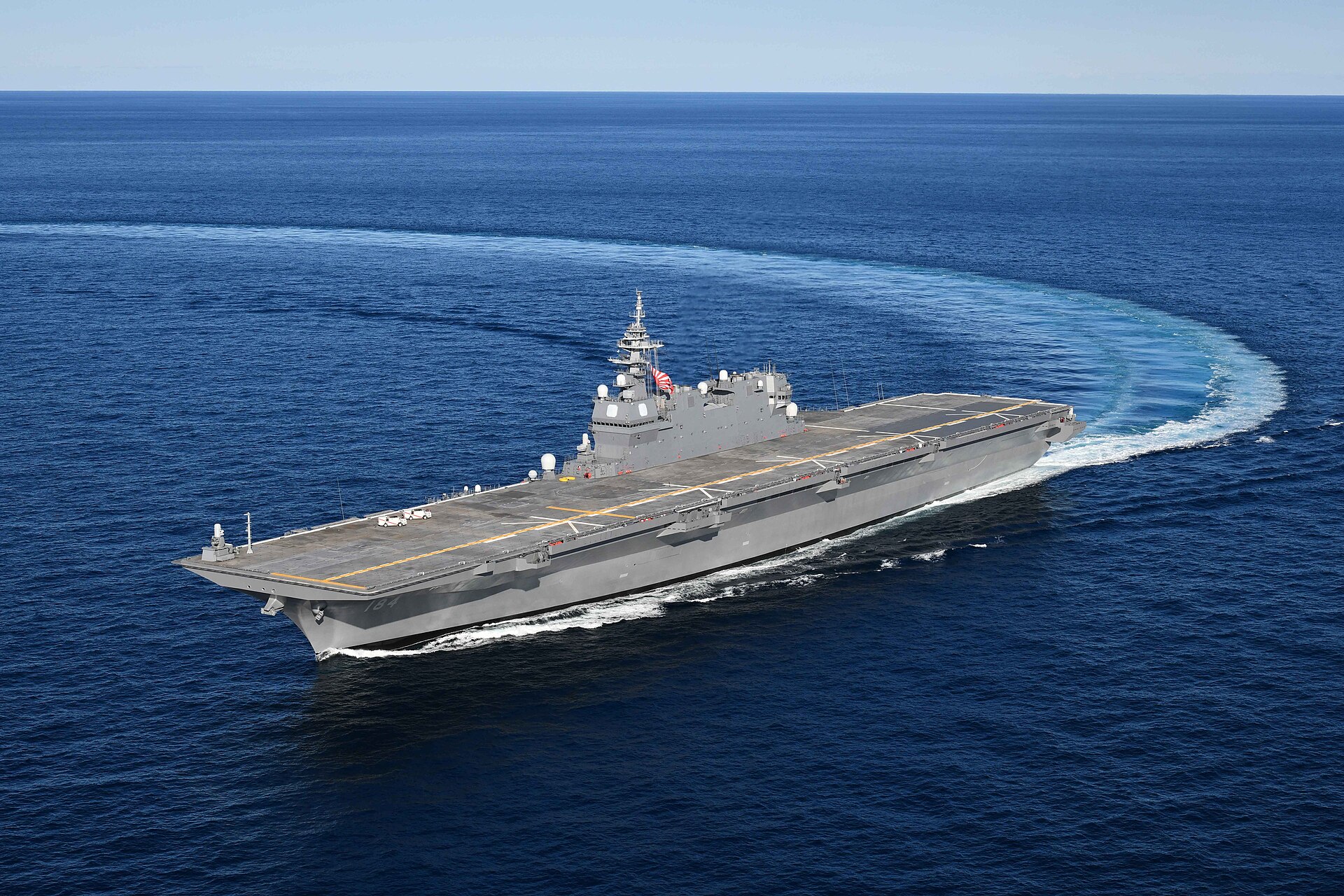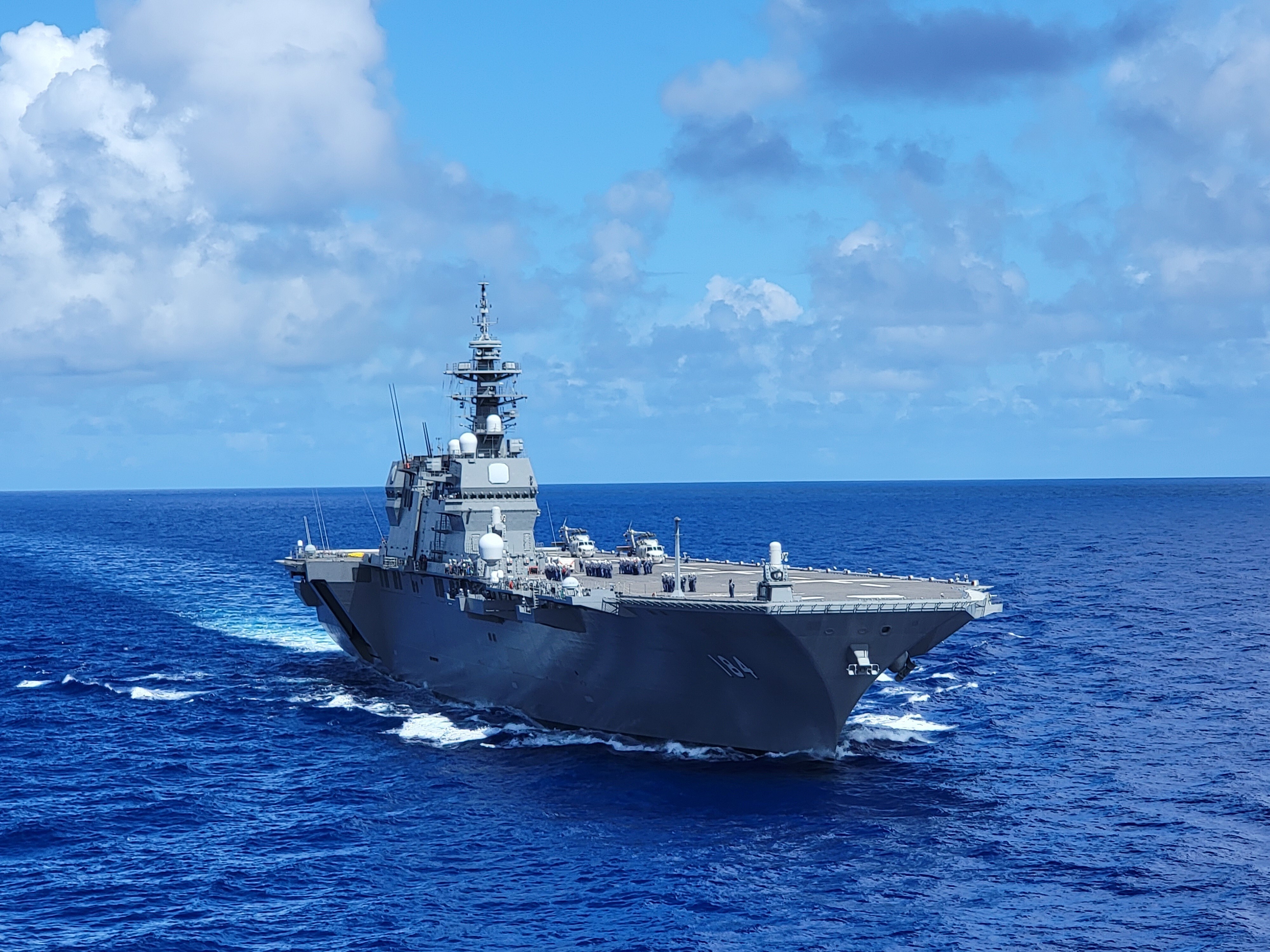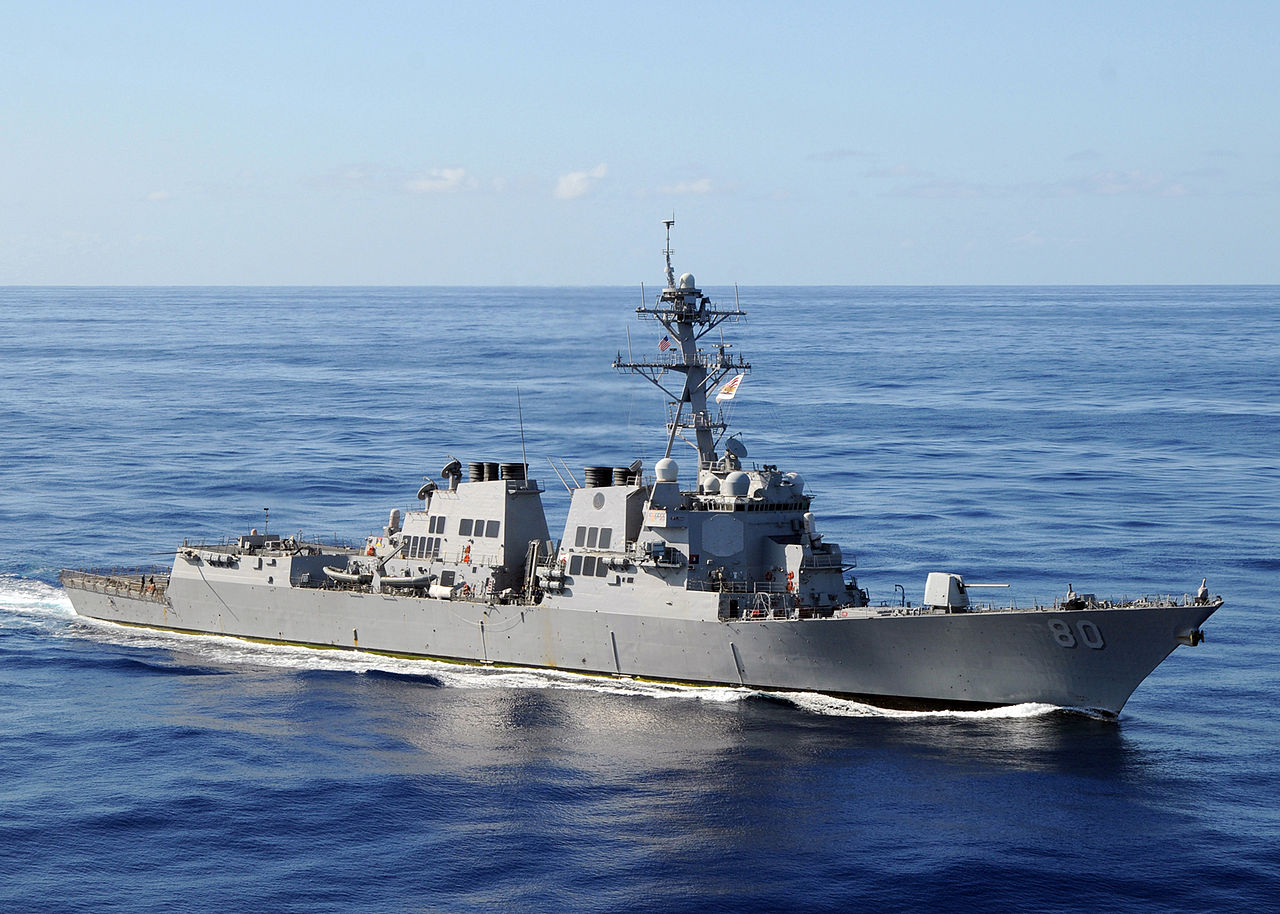Japan's totally-not-an-aircraft-carrier destroyers are being converted into aircraft carriers.
To help explain, let me go dig up some before and after pictures.
This is the post-conversion-into-an-aircraft-carrier Kaga:

This is the pre-conversion-into-an-aircraft-carrier "aircraft-carrying destroyer", at which point Japan had No Intentions Whatsoever of making an aircraft carrier and totally wanted a destroyer.

For contrast, this is what a more internationally-traditional conception of a destroyer looks like: a US destroyer, an Arleigh Burke-class:

https://en.wikipedia.org/wiki/JS_Kaga
Japanese nomenclature called Kaga a "multi-purpose operation destroyer" and its main purpose in the past was destroying enemy submarines.[10] Despite this, only 7 anti-submarine warfare helicopters and 2 search and rescue helicopters were planned for the initial aircraft complement. 400 troops and 50 3.5-ton trucks (or equivalent equipment) can also be carried.
After World War II, Japan's constitution was rewritten. At this time, the militarists were out of favor, given that they'd kicked off a disastrous war, and the pacifists were running things, and after some initial fracas over Japanese legislators aiming for minimal changes, General MacArthur's staff lawyers doing the initial draft.
One element had Japan renouncing belligerency:
https://en.wikipedia.org/wiki/Article_9_of_the_Japanese_Constitution
Article 9 of the Japanese Constitution (日本国憲法第9条, Nihon koku kenpō dai kyū-jō) is a clause in the Constitution of Japan outlawing war as a means to settle international disputes involving the state. The Constitution was drafted following the surrender of Japan in World War II. It came into effect on 3 May 1947 during the occupation of Japan by the Allies, which lasted until 28 April 1952. In its text, the state formally renounces the sovereign right of belligerency and aims at an international peace based on justice and order.
At present, the government interprets Article 9 to mean that Japan cannot possess offensive military weapons; this has been interpreted to mean that Japan cannot have:
- ICBMs,
- all types of weapons of mass destruction (e.g. nuclear weapons),
- aircraft carriers or
- bomber fleets.
Japan having just Pearl Harbored the US and then fought a major naval war against the US, the US was not really keen on Japan running around with aircraft carriers.
However, the world never stays the same.
https://afe.easia.columbia.edu/special/japan_1950_usjapan.htm
This constitution is sometimes called the "MacArthur Constitution," because General Douglas MacArthur, commander of all Allied forces in the Pacific, directed its writing. The United States fought and occupied Japan primarily to ensure that it would not go to war again, and Article 9 was written to guarantee this. In 1947 General MacArthur envisioned a postwar Japan that would remain disarmed and that would be overseen by the new United Nations.
Changing American Attitudes Toward Japan's Defense
The American vision of an unarmed Japan living in peace under the supervision of a world government was short-lived, however, because the international scene changed rapidly in the late 1940s. Chiang Kai-shek, America's wartime ally in China, was defeated by the communists and fled to Taiwan in 1949. Another one of America's wartime allies, the Soviet Union, quickly came to be seen as the greatest postwar threat to democracy. And in 1950 the Korean War pitted communist forces in the Far East against a United Nations force made up largely of Americans. Thus, by 1950 when John Foster Dulles was appointed to begin negotiating a peace treaty with Japan to conclude the American occupation, he and most other American policy makers had come to see Japan as very important to the defense of American interests and democracy in the Far East.
In negotiating the peace treaty that would end the occupation and return political control to the Japanese government, Dulles also sought to pressure the Japanese to rearm and to conduct a military alliance with the United States.
Ironically, by the end of the occupation it was the Americans who were pressing for Japanese rearmament while the Japanese government resisted rearmament in the name of the American-inspired constitution.
In the modern world, the US and Japan are on good terms, and the US, rather than objecting to Japan running around with aircraft carriers and maybe Pearl Harboring the US, would rather like Japan to have aircraft carriers, preferably more of them. It turns out that upon further examination, the Japanese constitution is apparently okay with aircraft carriers.
On 21 October 2019 a senior U.S. military officer in Tokyo said that "Japan’s avoidance of offensive weaponry under its constitution is no longer acceptable." The officer stated that Japan needs to rethink its rejection of offensive weapons and that the government should discuss it with the public. The officer said that the government of Japan should inform the public about the threats of China and North Korea.[58]